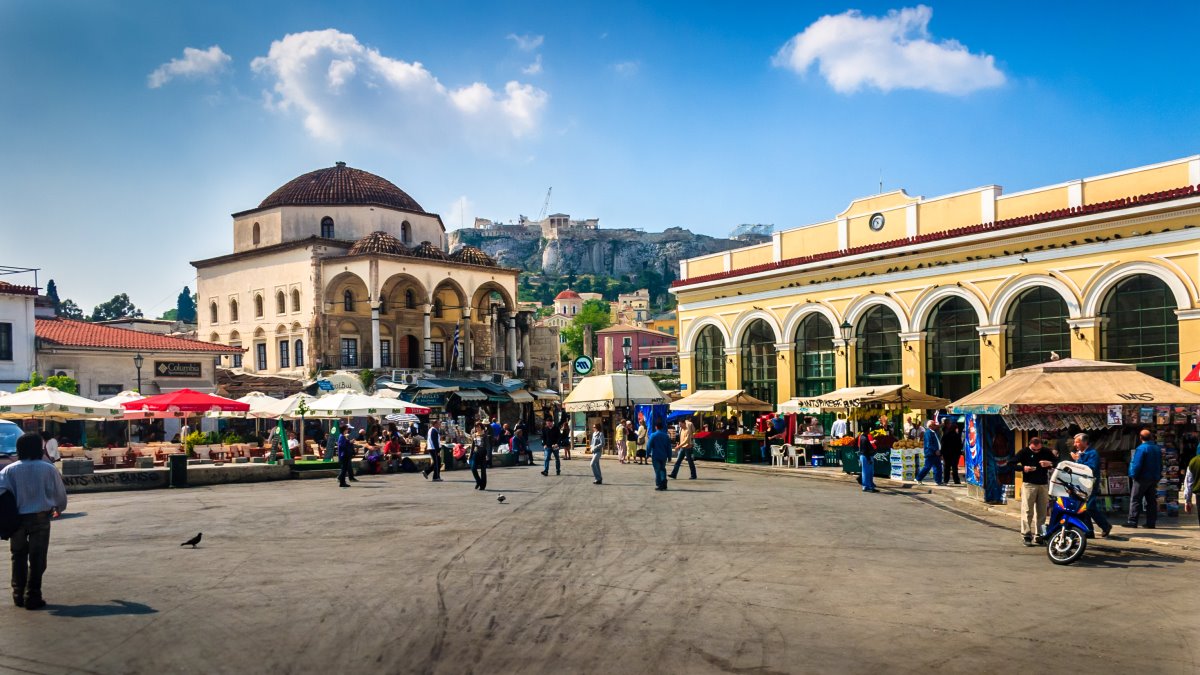Park of the Torn Stone (Schisti Petra)
Park of the Torn Stone (Schisti Petra)
What is not well known is that after the liberation from the Turkish occupation, the hill of Lycabettus had no vegetation at all. In 1831, the great architect of the time, the famous Stamatis Kleanthis, began to excavate it. In fact, he was one of the two architects who drew up the first city plan of Athens. This is where the story of “Little Lycabettus” begins, which became the Park of Torn Stone (Schisti Petra). Kleanthis had bought a large area called “Little Lycabettus” or “Torn Stone” (Schisti Petra) as it is known today. At that time, the land ended in today’s Panepistimiou Avenue. There Kleanthis created a “stone-cutting workshop”, an act that was later imitated by others. The slopes of the hill were exploited by stone quarries, as everyone wanted to mine the precious stone.
That is why it is called not only “Little Lycabettus” but also “Schisti Petra” (Torn Stone), because it shows exactly this situation. Due to its extensive carving, it seems as if the huge volume of stone had been “torn”, creating the main rock with the high top and a much smaller one next to it. The extraction of stone from the hill finally stopped in 1960. After a brief pause, the law of 1861 allowed the possibility of quarrying, as did a new law in 1900. At the same time, a tree-planting campaign was launched under the leadership of Princess Sophia in 1912.
In those years, “Schisti Petra” formed an unbroken unit with Lycabettus Hill until the 19th century. However, after various geological phenomena, extensive quarrying and the new urban planning of the area with new residences, the two hills were finally enclosed. Today, the ancient “Little Lycabettus” (Schisti Petra) extends over an area the size of a building block and has been transformed into a park surrounded by houses. The relief of the hill has also changed. The hill of “Schisti Petra” is defined by the streets of Lycabettus, Dimaki, Chersonos and Anagnostopoulou.
Another important issue was the planting of trees. It started in 1880, but the goats that grazed on the slopes in the area of “Katsikadika” (near Dexameni) ate all the young trees. In 1912 a new reforestation attempt was made and in 1915 another one was initiated by the Philodassiki Enosi Athinon Foundation, which was endangered by the arbitrary construction, since more and more buildings appeared, among them the so-called “metapraktika”, i.e. two-storey and semi-three-storey houses, built for exploitation (cheap housing for students, writers, artists). Although the Park of the Torn Stone (Schisti Petra) is located in the heart of Athens, few people are aware of its existence. What is certain is that Athens has many little secrets and its history always surprises us.






